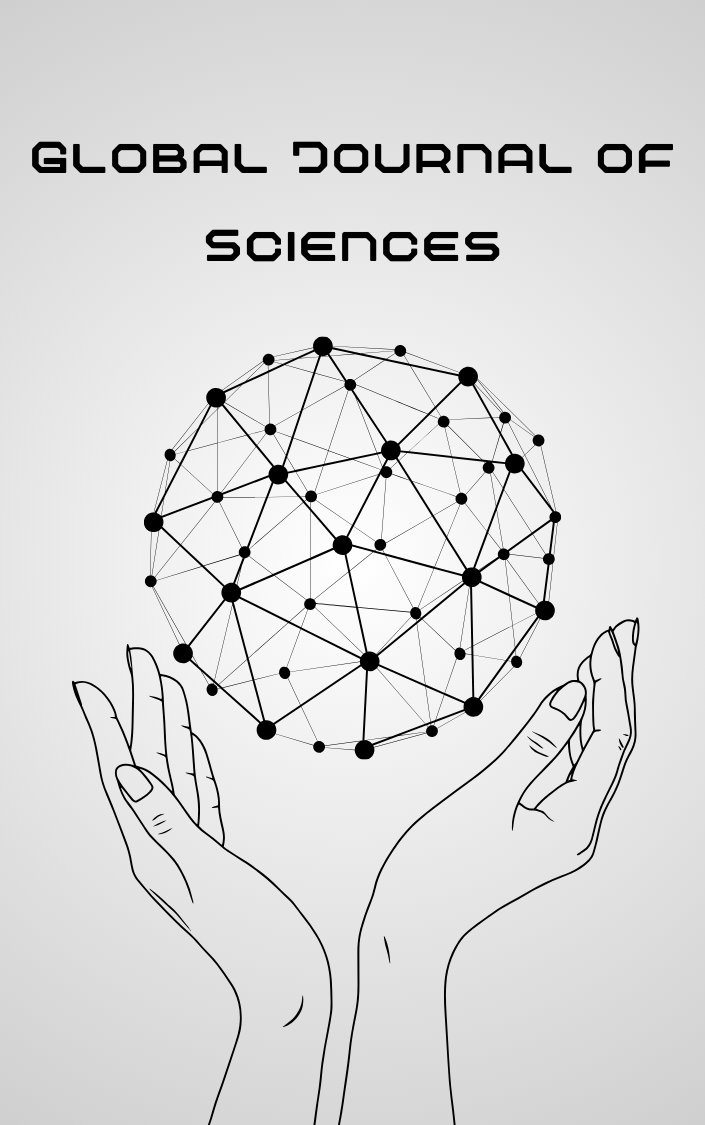Adaptation of the Optimal Auxiliary Function Method for Solving Highly Non Linear System of Fractional Order Partial Differential Equations
DOI:
https://doi.org/10.48165/gjs.2024.1208Keywords:
Caputo derivative, System of Fractional, Order Partial Differential, Equations, Optimal Auxiliary, Functions MethodAbstract
This research work represents the analysis of time-fractional system of highly non linear partial differential equation by applying the Optimal Auxiliary Function method (OAFM) while taking fractional derivative in Caputo sense. The OAFM does not require any polynomials like ADM method and small parameters like Perturbation method. The OAFM contains auxiliary constant which control the convergence of approximate solution in excellent way. Mathematica 13 is utilized to illustrate 2-dimensional curves and three-dimensional graphs and find numerical values that are displayed in a table. Furthermore, the OAFM and the exact solutions are compared. The numerical analysis reveals that the method is both valid and efficient as well as the suitability of the error bound. The results further demonstrate that the OAFM method is an effective approach for solving nonlinear physical models.References
[1] Cahn, J. W., & Hilliard, J. E. (1958). Free energy of a nonuniform system. I. Interfacial free energy. The Journal of chemical physics, 28(2), 258- 267..
[2] Kansa, E. J. (1990). Multiquadrics—A scattered data approximation scheme with applications to computational fluid-dynamics—II solutions to parabolic, hyperbolic and elliptic partial differential equations. Computers & mathematics with applications, 19(8-9), 147-161 [3] Zerroukat M, Power H, Chen C. A numerical method for heat transfer problems using collocation and radial basis functions. International Journal for numerical methods in Engineering. 1998 Aug 15;42(7):1263-78.
[4] Suleman, M., Elzaki, T. M., Rahman, J. U., & Wu, Q. (2016). A novel technique to solve space and time fractional telegraph equation. Journal of Computational and Theoretical Nanoscience, 13(3), 1536-1545.
[5] Chen, J., Liu, F., & Anh, V. (2008). Analytical solution for the time-fractional telegraph equation by the method of separating variables. Journal of Mathematical Analysis and Applications, 338(2), 1364-1377.
[6] Marinca, B., & Marinca, V. (2018). Approximate analytical solutions for thin film flow of a fourth grade fluid down a vertical cylinder. Proceed Romanian Academy, Series A, 19(1), 69-76.
[7] Zada, L., Nawaz, R., Ayaz, M., Ahmad, H., Alrabaiah, H., & Chu, Y. M. (2021). New algorithm for the approximate solution of generalized seventh order Korteweg-Devries equation arising in shallow water waves. Results in Physics, 20, 103744.
[8] Mohammed, O. H., Hanan, I. K., & Al-Sabbagh, A. A. Some Numerical Methods For Solving Fractional Parabolic Partial Differential Equations. [9] Khan, Y., Vazquez-Leal, H., & Faraz, N. (2013). An auxiliary parameter method using Adomian polynomials and Laplace transformation for nonlinear differential equations. Applied Mathematical Modelling, 37(5), 2702-2708.
[10] Nofal, T. A. (2016). Simple equation method for nonlinear partial differential equations and its applications. Journal of the Egyptian Mathematical Society, 24(2), 204-209..
79 Farooq et al, Global Journal of Sciences, 1(2), 2024, 71-79
[11] Abassy, T. A., El-Tawil, M. A., & El-Zoheiry, H. (2007). Modified variational iteration method for Boussinesq equation. Computers & Mathematics with Applications, 54(7-8), 955-965.
[12] Jafari, H., Nazari, M., Baleanu, D., & Khalique, C. M. (2013). A new approach for solving a system of fractional partial differential equations. Computers & Mathematics with Applications, 66(5), 838-843..
[13] Syam, M. I. (2005). Adomian decomposition method for approximating the solution of the Korteweg–deVries equation. Applied Mathematics and Computation, 162(3), 1465-1473.
[14] Andrianov, I. V., Olevskii, V. I., & Tokarzewski, S. (1998). A modified Adomian's decomposition method. Journal of applied mathematics and mechanics, 62(2), 309-314..
[15] Shafee, A., Alkhezi, Y., & Shah, R. (2023). Efficient solution of fractional system partial differential equations using Laplace residual power series method. Fractal and Fractional, 7(6), 429.
[16] Alkhezi, Y., Shafee, A., & Shah, R. (2022). Fractional view analysis of partial differential equation via residual power series transform method. Appl Math Sci, 16(12), 585-99.
[17] Alquran, M., Ali, M., Alsukhour, M., & Jaradat, I. (2020). Promoted residual power series technique with Laplace transform to solve some time fractional problems arising in physics. Results in Physics, 19, 103667.
[18] Falade, K. I., & Tiamiyu, A. T. (2020). Numerical solution of partial differential equations with fractional variable coefficients using new iterative method (NIM). Mathematical Sciences and Computing, 3, 12-21..
[19] Al-Jawary, M. A. (2016). An efficient iterative method for solving the Fokker–Planck equation. Results in physics, 6, 985-991. [20] Marinca, V., & Herisanu, N. (2015). An application of the optimal auxiliary functions to Blasius problem. The Romanian Journal of Technical Sciences. Applied Mechanics., 60(3), 206-215..
[21] I Marinca, V., & Marinca, B. (2018). Optimal auxiliary functions method for nonlinear thin film flow of a third grade fluid on a moving belt. A A, 2(2), 1-2..
[22] Marinca, V., Ene, R. D., & Marinca, V. B. (2018). Optimal Auxiliary Functions Method for viscous flow due to a stretching surface with partial slip. Open Engineering, 8(1), 261-274..
[23] Nonlaopon, K., Naeem, M., Zidan, A. M., Shah, R., Alsanad, A., & Gumaei, A. (2021). Numerical Investigation of the Time‐Fractional Whitham– Broer–Kaup Equation Involving without Singular Kernel Operators. Complexity, 2021(1), 7979365.

